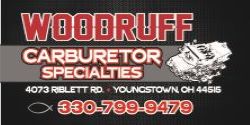Somehow, I'm the guy that has stumbled through this hobby sometimes not doing things the way that I am supposed to be doing.
I've never checked or compensated for installed height with valve springs. I've never experienced valve float or kissed a valve with a piston.
I've never checked or adjusted end play in a crankshaft, I've never measured piston to wall clearance either.
I've adjusted valve lash with solid lifters but never gone the other way with a hydraulic lifter. With small block Chevys, it was customary to tighten the rocker arms to zero lash then turn the nut 1/2 to 3/4 turn more.
Here we are as Mopar guys and we have rocker shafts that are non adjustable. I've rebuilt several engines, had milled heads, decked blocks, different head gasket thicknesses and have not seen any adverse effects from the lifter preload not being checked and/or blueprinted to spec.
This topic comes up for me because I'm doing a Hydraulic roller cam swap in a big block and Dwayne Porter told me about what the spec is for lifter preload with the Comp Cams Evolution lifters.
I have a 1990 360 that I'm also working on and it came with a Hughes 1.6 rocker arm set. I'd be okay with just settling with a decent set of stock rocker arms but now I'm wondering if I should be concerned with lifter preload on the 360. How do you adjust that with a stock shaft mounted rocker arm setup? Do you perform a mock up with an adjustable length pushrod and determine the preload with a dial indicator?
I've never checked or compensated for installed height with valve springs. I've never experienced valve float or kissed a valve with a piston.
I've never checked or adjusted end play in a crankshaft, I've never measured piston to wall clearance either.
I've adjusted valve lash with solid lifters but never gone the other way with a hydraulic lifter. With small block Chevys, it was customary to tighten the rocker arms to zero lash then turn the nut 1/2 to 3/4 turn more.
Here we are as Mopar guys and we have rocker shafts that are non adjustable. I've rebuilt several engines, had milled heads, decked blocks, different head gasket thicknesses and have not seen any adverse effects from the lifter preload not being checked and/or blueprinted to spec.
This topic comes up for me because I'm doing a Hydraulic roller cam swap in a big block and Dwayne Porter told me about what the spec is for lifter preload with the Comp Cams Evolution lifters.
I have a 1990 360 that I'm also working on and it came with a Hughes 1.6 rocker arm set. I'd be okay with just settling with a decent set of stock rocker arms but now I'm wondering if I should be concerned with lifter preload on the 360. How do you adjust that with a stock shaft mounted rocker arm setup? Do you perform a mock up with an adjustable length pushrod and determine the preload with a dial indicator?
















